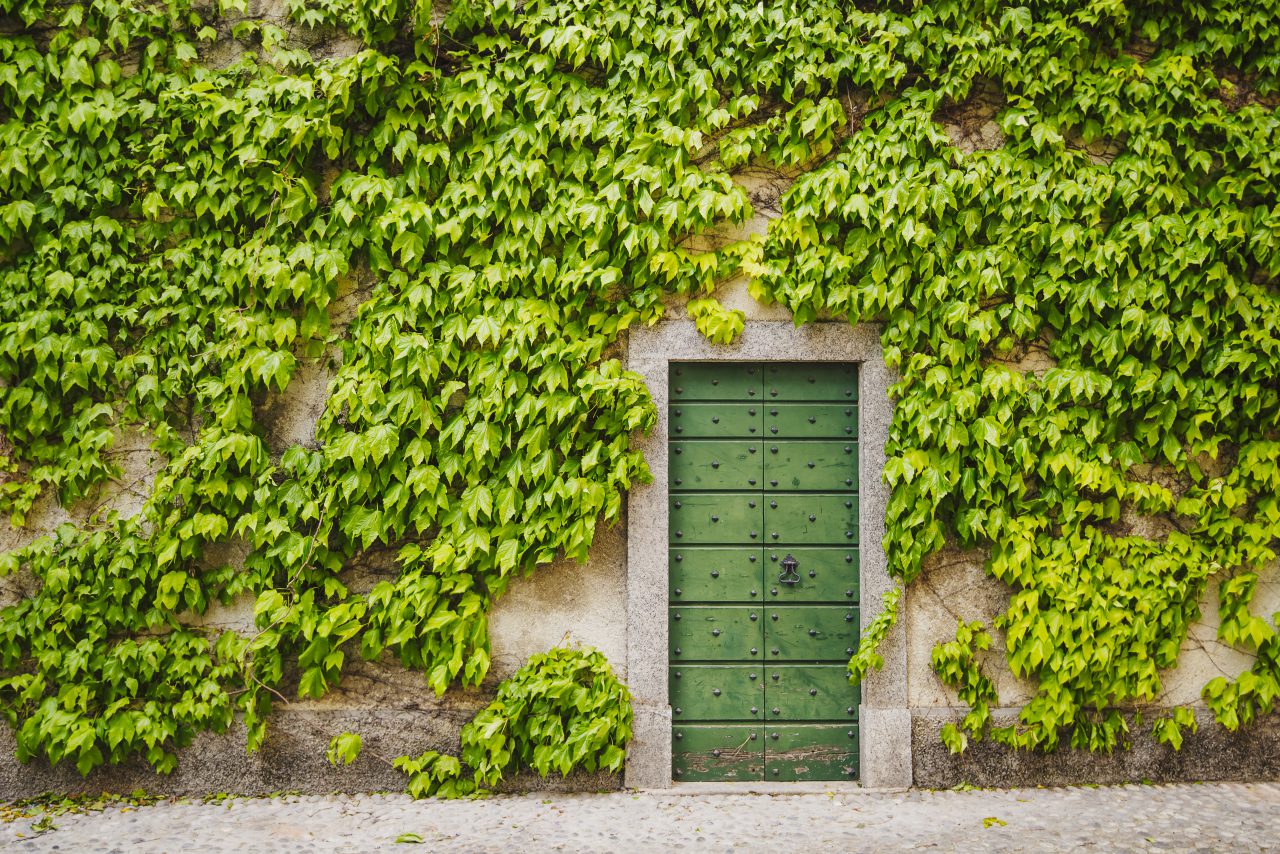Living in the land of kudzu, I have always been wary of the potential of vines to eat my house. Consequently, over the years spent at ardent gardening, I have studiously remained clear of them. However, three things recently caused me to regard vines in a new light: I have a fence, I fell in love this past summer with a particular vine my hairdresser grew on his property, and my garden has little room to include additional plants. So I have found myself thinking of vertical ways to incorporate new plants.
The fence is a handsome one, a barrier that has served its purpose well, keeping the deer out of the garden. To paraphrase Jane Austen, it is a truth universally acknowledged that deer and gardens do not make a good marriage. But fences, even handsome wooden fences, look awfully bare. And as far as I can make out, climbing roses and vines are the only suitable plants to dress a fence.
The vine that is the particular object of my lust is Lablab purpurea, also known as the hyacinth bean vine. Because it’s an annual, I was able to play down its dangers — after all, how much danger can an annual vine pose? Visions of Lablab purpurea — a silly Latin name if I have ever heard one — and Rosa banksiae intertwined on the fence began dancing through my head.
To step into vineland requires some research because there are many vines that are totally inappropriate outside of a vast rainforest. To educate myself on the complexities of vines, I turned to Allan Armitage’s “Armitage’s Vines and Climbers: A Gardener’s Guide.” A professor of horticulture at the University of Georgia, Armitage informs the reader as to those vines that have the potential to take over the world. We all know the dangers of Chinese and Japanese wisteria, but did you know that our native wisteria, while a somewhat slower grower, has the potential to cover half your house in five years? Just because it’s a native vine does not mean it’s a safe one.
In vineland there are certain plants that spell trouble. “Vigorous” is a dangerous word garden writers use because it sounds better than “rampant” and “out of control.” One of the prettiest vines, the coral vine, Antigonon lepltopus, grows so quickly that soldiers used it as camouflage to hide anti-aircraft guns in World War II. Granted, the North Carolina Piedmont isn’t in the tropics, but did I dare take a chance with this vine? Likewise, Campsis radicans, aka trumpet creeper, can eat through stucco walls and telephone poles. Did my handsome wooden fence have a chance against such a molester?
What I needed were gentle vines, ones that would decorate the fence. What I didn’t need were vines that would eat it up. Canavalia gladiate, aka Jack Bean, intrigued me, especially since I’d seen Allan Armitage profile it in the experimental garden at the University of Georgia before it was introduced to the public. While hard to find, the seeds are now obtainable, according to a Google search, so it sounds promising because, while it’s a vigorous grower, it is an annual – and how much territory can an annual vine cover before that first frost?
Where the Armitage book was worth its cost was found in his chapter on clematis, a confusing genus if there ever was one. Not only are there hundreds and hundreds of clematis hybrids, but also the genus is split into a bewildering number of groups, which all seem to have different pruning schedules. Armitage details quite clearly which groups perform best in cooler climes, which ones are appropriate for the Southeast, and which ones are prone to the dreaded clematis wilt. I quickly settled on C. texensis, one he deems as “idiot-proof” with deep pink flowers. Needless to say, I love idiot-proof deep pink flowers. Everyone appears to love the “Duchess of Albany” and “Princess Diana,” so these two clematis were added to my list.
It rapidly became apparent that in vineland, there is a great dividing line in terms of hardiness between my zone 7a and zone 7b. Some wonderful vines, such as Trachelospermum jasminoides, aka confederate jasmine, face dubious winter prospects here in 7a. One wonderful fact I learned is that the “confederate” in confederate jasmine refers to Malaysia, not the Southern Confederacy and isn’t a jasmine at all. Only one cultivar has a chance of survival here in the Piedmont, so I might try “Madison,” as this genus has a delicious aroma. If it works, it works. If it doesn’t, it will have been worth a try.
You might ask, after this exploration, what did I decide upon. I already have a Lady Banks rose, which hopefully will spring to life after spending a whole summer just vegetating. I suspect the two clematis, “Duchess of Albany” and “Princess Diana,” will accompany the Lady Banks. The hyacinth bean vine, an annual, is an absolute must. I shall definitely try the confederate jasmine “Madison,” as I have a desire to be seduced by enticing aroma.
But be warned: Vines can be addictive. I found myself contemplating extending the fence to include my neighbor’s property so I could incorporate either more vines or climbing roses. I still need to find room for Jack Bean vine. It’s showy and ostentatious, which is just what I want. At my age, I’m willing to settle for a little vulgarity – provided my house and cars are safe.









